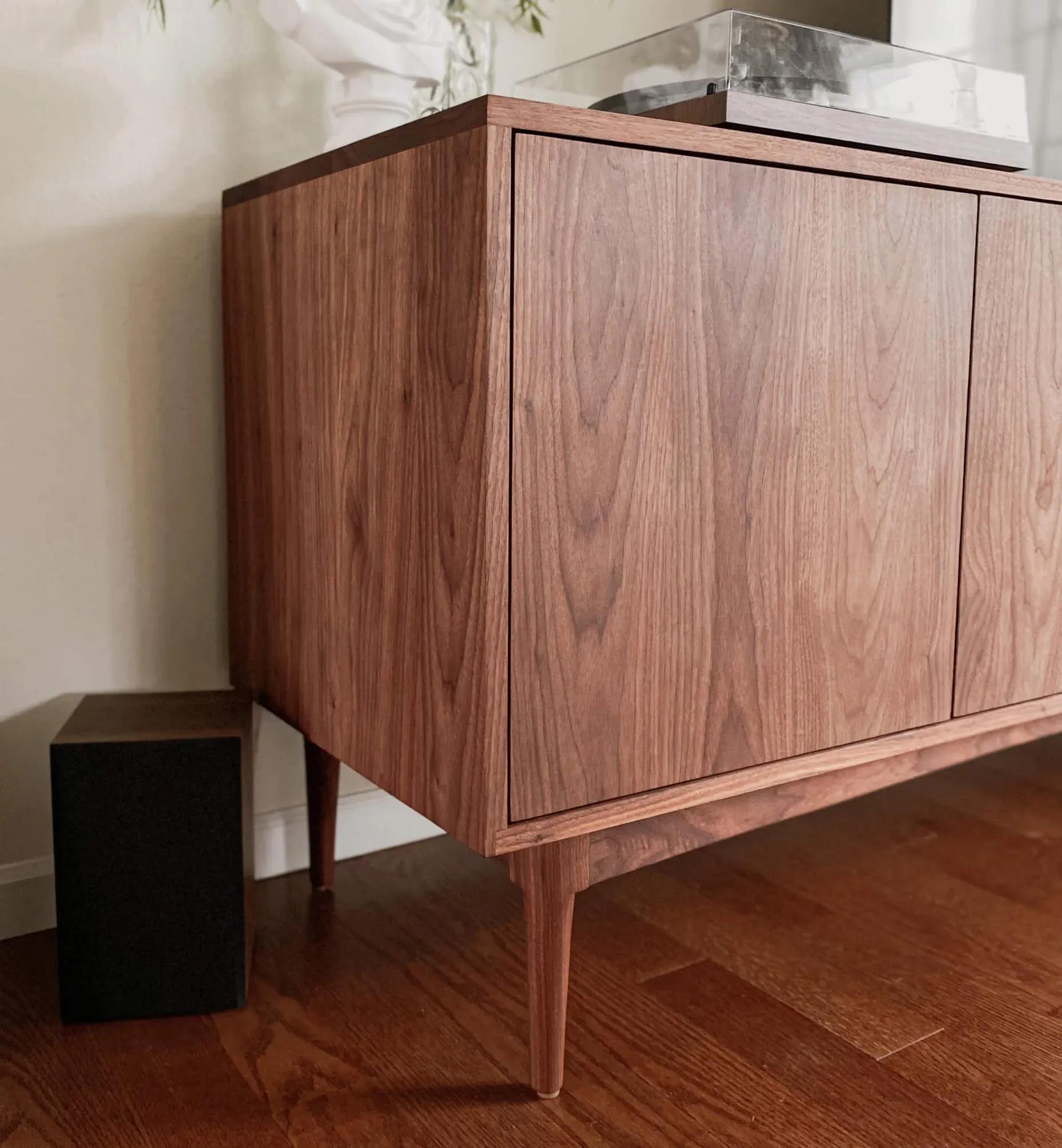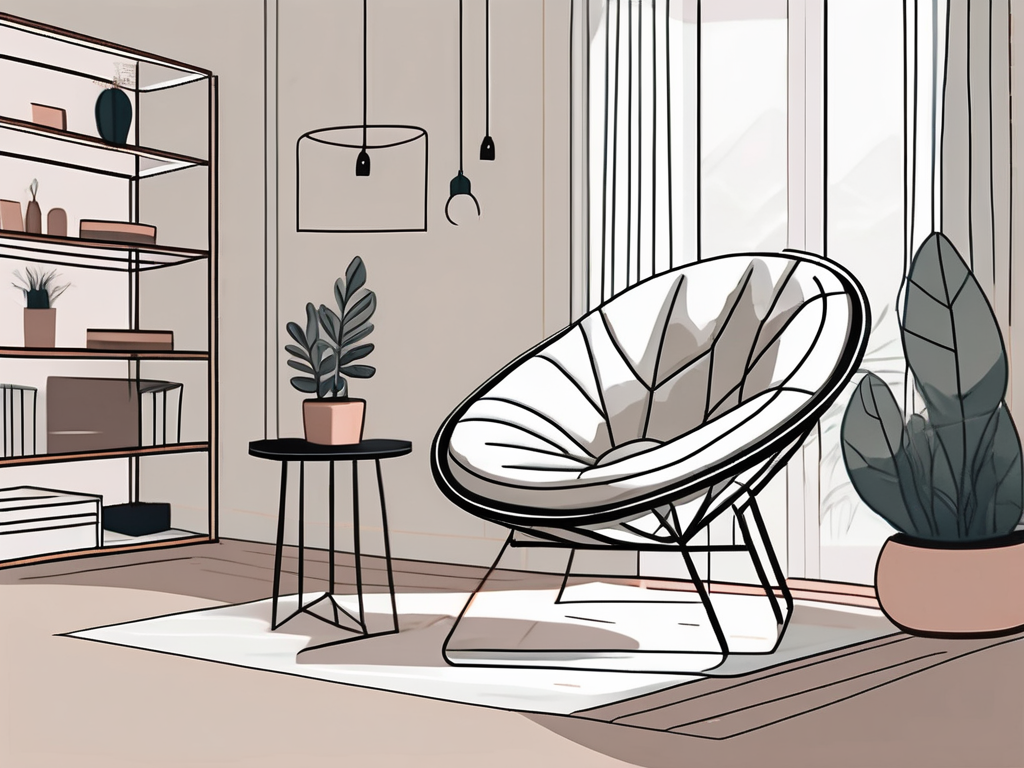What is a Credenza?
Credenzas transform from medieval tasters to modern marvels, serving up style and storage in equal measure. These low-slung chameleons adapt to any room, proving that the best furniture pieces are those that effortlessly blend form, function, and a dash of history.

In the world of furniture, some pieces are workhorses, some are showstoppers, and then there's the credenza—a chameleon that effortlessly does both. If you've ever admired a sleek, low-profile cabinet in a stylish office or dining room and thought, "I don't know what that is, but I want one," chances are you were looking at a credenza.
The Essence of a Credenza
A credenza is a type of low, long storage piece typically featuring a flat top and cabinets or drawers for storage. It's like the Swiss Army knife of furniture—versatile, functional, and surprisingly stylish. Originally found in dining rooms, credenzas have since made themselves at home in offices, living rooms, and even bedrooms.
A Brief History: From Taste-Testing to Taste-Making
The word "credenza" comes from the Italian word "credere," meaning "to believe" or "trust." This etymology offers a clue to its original purpose. In medieval times, credenzas were used in noble households for food tasting. Servants would place food on the credenza to test it for poison before serving it to their lords. Talk about a job with high stakes!
As times changed (and food poisoning became less of a concern for the upper classes), the credenza evolved. By the 14th century, it had become a place to display fine dishware and prepare food and drinks for guests. Fast forward to today, and the credenza has become a beloved piece of furniture that marries form and function in homes and offices worldwide.
Types of Credenzas
Credenzas come in various styles to suit different needs and aesthetics:
- Traditional Credenzas: Often featuring ornate woodwork and antique-inspired designs.
- Modern Credenzas: Characterized by clean lines, minimalist designs, and sometimes incorporating materials like metal or glass.
- Mid-Century Modern Credenzas: Popularized in the 1950s and 60s, featuring sleek lines and often standing on tapered legs.
- Office Credenzas: Designed to complement desks, often with file drawers and cord management features.
- Media Credenzas: Built to house entertainment systems, with features like ventilation and cable management.
The Versatility of Credenzas
One of the credenza's greatest strengths is its adaptability. Here's how it can function in different rooms:
- Dining Room: Use it to store dinnerware, linens, and serving pieces. The top can serve as a buffet for dinner parties.
- Living Room: Perfect for storing media equipment, games, or displaying books and decor.
- Home Office: Provides additional storage and work surface next to a desk.
- Bedroom: Can function as a stylish alternative to a traditional dresser.
- Entryway: Offers a surface for keys and mail, with storage for shoes and outerwear.
Choosing the Right Credenza
When selecting a credenza, consider these factors:
- Size: Measure your space carefully. Credenzas typically range from 60 to 72 inches in width.
- Style: Choose a design that complements your existing decor.
- Functionality: Consider what you'll be storing. Do you need drawers, cabinets, or open shelving?
- Material: Common options include wood, metal, and glass. Each has its own aesthetic and maintenance requirements.
- Color: While wood tones are classic, don't be afraid to consider a credenza in a bold color as a statement piece.
Styling Your Credenza
A credenza isn't just storage—it's an opportunity to showcase your style. Here are some tips:
- Use the top of the credenza to create a vignette with artwork, plants, and decorative objects.
- If using it for TV storage, balance the television with books or decor on either side.
- In a dining room, consider placing table lamps on either end for ambiance.
- Use trays to corral smaller items and create a more organized look.
Credenza vs. Sideboard vs. Buffet
You might be wondering how a credenza differs from its cousins, the sideboard and the buffet. While these terms are often used interchangeably, there are subtle differences:
- Credenza: Typically features a low profile and may have short legs or none at all.
- Sideboard: Usually has longer legs and might be slightly taller than a credenza.
- Buffet: Similar to a sideboard but often taller and narrower.
In practice, these distinctions are often blurred, and the term you use might depend more on personal preference or regional differences.
Caring for Your Credenza
To keep your credenza looking its best:
- Dust regularly with a soft, dry cloth.
- Use coasters under drinks and placemats under hot dishes to protect the surface.
- For wooden credenzas, consider using furniture polish or wood conditioner periodically.
- Clean any glass components with a glass cleaner and lint-free cloth.
Final Thoughts
From its origins as a food-tasting station to its current status as a versatile storage superstar, the credenza has proven its staying power in the world of furniture. Whether you're looking to add some extra storage to your dining room, create a stylish media center in your living room, or upgrade your home office, a credenza might just be the perfect addition.
So, the next time you're pondering how to elevate your space with a piece that's both functional and fashionable, consider the credenza. It's been trusted for centuries to do just that—and that's a legacy you can believe in.
Check out credenzas and sideboards on Spoken and never overpay making your home beautiful!
Quick facts
What is the purpose of a credenza?
A credenza serves multiple purposes in both home and office settings. It provides storage for dining items, office supplies, or electronics. In dining rooms, it's often used for serving food. In offices, it can house printers or files. Credenzas also offer additional surface area for displays or workspace, combining functionality with decorative appeal.
What is the difference between a credenza and a sideboard?
While often used interchangeably, credenzas are typically shorter and more refined than sideboards. Credenzas usually have sliding doors or drawers and sit on slender legs. Sideboards are generally larger, with more storage space, and often reach to the floor. Credenzas are commonly found in offices, while sideboards are more associated with dining rooms.
Why do they call it a credenza?
The term "credenza" comes from the Italian word "credenza," meaning "belief" or "trust." Historically, it referred to the room where food was tasted for poison before being served to nobility, ensuring it was safe to eat. Over time, the term shifted to describe the furniture used for this purpose, evolving into the storage piece we know today.
What is another name for a credenza?
A credenza is also known by several other names, including sideboard, buffet, or server. In office settings, it might be called a console cabinet or storage cabinet. The term used often depends on the specific design, function, or regional preferences. Regardless of the name, these pieces serve similar storage and display purposes.

Pavan Jadhaw
Software Engineer at Spoken
Pavan is a Fullstack Engineer at Spoken. He's passionate about both software and mechanical engineering. When he's not coding, you’ll find him tinkering with his homeserver, working on his motorcycle, or building custom mechanical keyboards. He’s a fan of minimalistic and functional decor.
Read more

